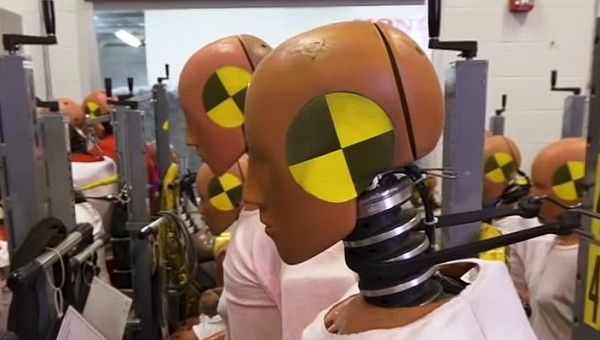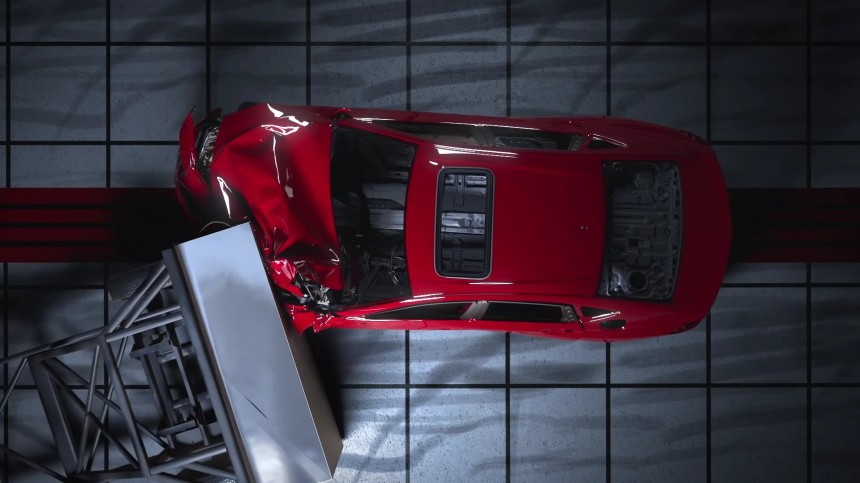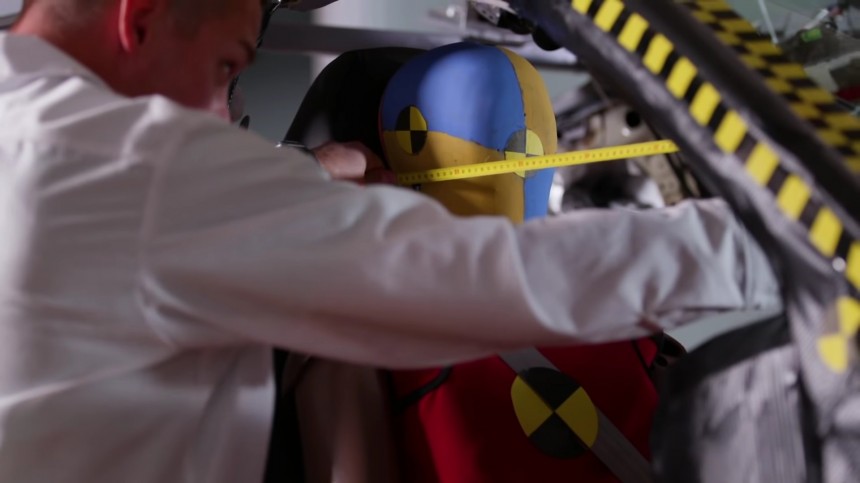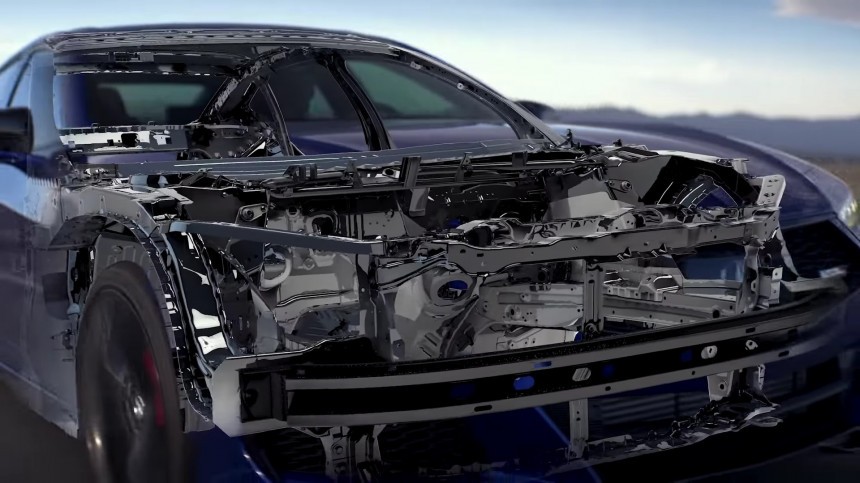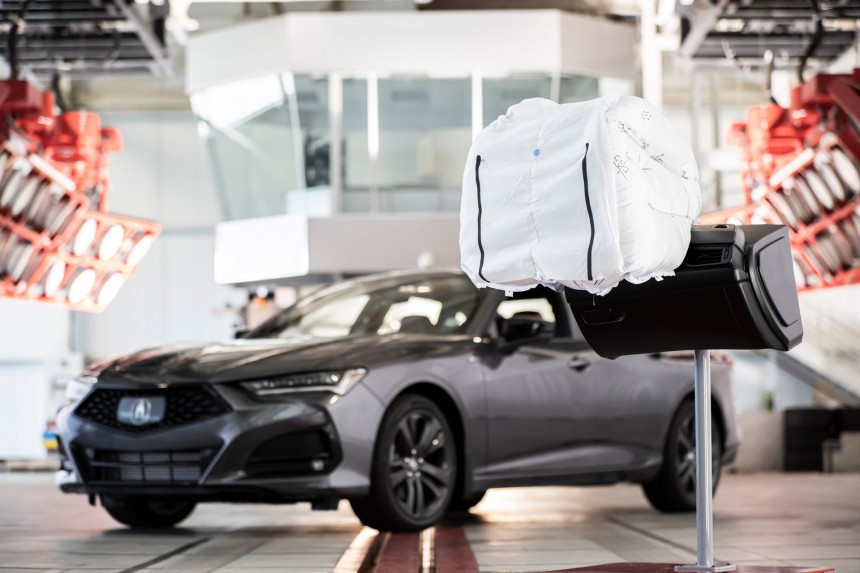Imagine the automobile of 2023 without its airbags. Quite ridiculous, I will admit, but the safety feature has become just as standard as the mirrors or the turn lights. Surprisingly, the crash-deployed cushion is far from being a complete and perfect design. Constant improvements are made to the hidden accessory – although we are (thankfully) oblivious to them.
When I say “regular,” consider this from an engineering research and development perspective. It can take years – or decades – before a significant design change reaches mass-scale production. Compare the airbag evolution with its safety cousin – the seat belt.
Not much has (apparently) changed in the way the three-point strap looks since Nils Bohlin, a Volvo engineer, invented it in 1959. And we might be tended to say the same about the airbags. The sack inflates at unbelievable speeds to protect motorists from hard-surface impacts triggered by a violent automobile collision.
That’s true when considering the basic operating principle of the airbag, but the details are mind-blowingly intricate. There’s a reason why carmakers conduct extensive voluntary destruction sessions of their vehicles – to learn how to make them safer.
Engineers spend ages repeating incessantly and obsessively the vast array of real-life derived tests, and they very seldom get the credit they deserve. Think about it for a second – when was the last time you thought about the guy who devised the ABS? Or said “Thank you for your service!” to the unsung hero who contrived the parking sensors?
The same applies to nearly every brilliant mind who spends countless hours gathering and studying enormous amounts of data to make tiny adjustments to a part we never know about, but will save our lives.
Although we now take it for granted, the airbag wasn’t always a success story – some three decades ago, carmakers in the US advocated against the widespread introduction of this feature. Partly, they were right – the crude designs of early airbags weren’t without undesired side effects.
“Side effects” is the catchphrase here, and "side" is the key to the puzzle. Early designs had undesirable features, such as projecting a person’s head to the side of the inflated airbag. In numerous cases, this resulted in severe injury – or even worse.
However, a clever engineer from Honda devised a solution for this – and it’s downright outrageously simple and obvious. We would tend to say, “Why haven’t they thought about this in the first place?”; here's a reason: engineering is complex and requires extensive research, thorough development, and self-confidence-shattering trial-and-error episodes.
A select club of people would consider this their life call. Eric Heitkamp is among those chosen stubborn progressists who refuse to give in to repetitive standstills. The name is unfamiliar, but his work is recognized worldwide and appreciatively decorated. This is no metaphor; the brainiac – Honda’s chief engineer in Automotive Safety – received the U.S. Government Award for Safety Engineering Excellence.
His work led to a radical design change in frontal passenger airbags – and the video explains exactly what’s what about this seemingly simple device. The shape of the airbag was modified to constrain a person’s head from bouncing off the airbag and slamming into hard surfaces.
Think of the baseball mitt principle – the ball is directed toward the palm of the catcher. Similarly, the three-chamber cushion prevents angled frontal collision brain injury. Incredibly, after decades of intense study and heaps of money spent on crash tests, the problem slipped away unnoticed.
Decade-long statistics pointed out that the most often occurring type of automobile accident is not the full-frontal impact or the broadside clash, but the oblique head-on crash. The automobile’s front end doesn’t hit the obstacle along its entire surface area.
The resulting forces throw the car in a pivotal motion around the point of contact, with the occupants swerving in the opposite direction (due to inertial forces). In such cases, a plain-faced airbag is not very effective. As I said, the video is more revealing than the technical jargon.
The award recognizes Erik Heitkamp’s work from 2019, when he and his team addressed a then-new identified issue, namely severe brain trauma associated with angled frontal collisions. The head-on approach to the head-to-the-side challenge was completed two years later.
The 2021 Acura TLX sport sedan was the first vehicle in the world to be equipped with the innovative airbag. Currently, the technology is implemented in the Acura MDX, Acura TLX, and Honda Pilot.
The NHTS award – presented every two years – is not a mere “participation trophy” or honorary achievement recognition. “The U.S. Government Awards for Safety Engineering Excellence recognize individuals who have made exceptional scientific contributions in the field of motor vehicle safety engineering and for distinguished service to the motoring public.”
Erik Heitkamp has been working with Honda Research and Development Americas since 1999 (he was a student intern then) and gradually worked his way up to his current position. He currently holds 14 patents for safety-related technologies.
Besides being Honda’s American branch’s chief Automotive Safety engineer, Mr. Heitkamp is the crashworthiness technical leader, overseeing vehicle research initiatives for restraint systems and vehicle structure. The honor was presented in Yokohama, Japan, at the 27th international technical conference on the Enhanced Safety of Vehicles.
Not much has (apparently) changed in the way the three-point strap looks since Nils Bohlin, a Volvo engineer, invented it in 1959. And we might be tended to say the same about the airbags. The sack inflates at unbelievable speeds to protect motorists from hard-surface impacts triggered by a violent automobile collision.
That’s true when considering the basic operating principle of the airbag, but the details are mind-blowingly intricate. There’s a reason why carmakers conduct extensive voluntary destruction sessions of their vehicles – to learn how to make them safer.
The same applies to nearly every brilliant mind who spends countless hours gathering and studying enormous amounts of data to make tiny adjustments to a part we never know about, but will save our lives.
Although we now take it for granted, the airbag wasn’t always a success story – some three decades ago, carmakers in the US advocated against the widespread introduction of this feature. Partly, they were right – the crude designs of early airbags weren’t without undesired side effects.
However, a clever engineer from Honda devised a solution for this – and it’s downright outrageously simple and obvious. We would tend to say, “Why haven’t they thought about this in the first place?”; here's a reason: engineering is complex and requires extensive research, thorough development, and self-confidence-shattering trial-and-error episodes.
A select club of people would consider this their life call. Eric Heitkamp is among those chosen stubborn progressists who refuse to give in to repetitive standstills. The name is unfamiliar, but his work is recognized worldwide and appreciatively decorated. This is no metaphor; the brainiac – Honda’s chief engineer in Automotive Safety – received the U.S. Government Award for Safety Engineering Excellence.
Think of the baseball mitt principle – the ball is directed toward the palm of the catcher. Similarly, the three-chamber cushion prevents angled frontal collision brain injury. Incredibly, after decades of intense study and heaps of money spent on crash tests, the problem slipped away unnoticed.
Decade-long statistics pointed out that the most often occurring type of automobile accident is not the full-frontal impact or the broadside clash, but the oblique head-on crash. The automobile’s front end doesn’t hit the obstacle along its entire surface area.
The award recognizes Erik Heitkamp’s work from 2019, when he and his team addressed a then-new identified issue, namely severe brain trauma associated with angled frontal collisions. The head-on approach to the head-to-the-side challenge was completed two years later.
The 2021 Acura TLX sport sedan was the first vehicle in the world to be equipped with the innovative airbag. Currently, the technology is implemented in the Acura MDX, Acura TLX, and Honda Pilot.
Erik Heitkamp has been working with Honda Research and Development Americas since 1999 (he was a student intern then) and gradually worked his way up to his current position. He currently holds 14 patents for safety-related technologies.
Besides being Honda’s American branch’s chief Automotive Safety engineer, Mr. Heitkamp is the crashworthiness technical leader, overseeing vehicle research initiatives for restraint systems and vehicle structure. The honor was presented in Yokohama, Japan, at the 27th international technical conference on the Enhanced Safety of Vehicles.
